Much has changed over the last six weeks for me. I travelled to Rome and then back to London and am now in New Bedford, Massachusetts for the remainder of the year. I spent fifteen glorious months in England and was just settling in. I had finally gotten it straight that in Cornwall the jam goes on the scone before the clotted cream. (It’s the opposite in Devon).
I am very grateful for all the support from the friars and sisters and lay supporters, especially to the friars of England: Fr. Agnellus, Fr. George, Fra Leonard, Fr Solanus and Fra Paschal. I will miss the people and village of St. Mawgan and Newquay, especially the Sunday Mass crowd that educated me in all things English, Irish, and most of all, Cornish, and the parishioners from Holy Trinity. Cornwall, the Land of Saints, and Lanherne, the perpetual flame of the Catholic faith in England are graven in my heart. Thanks to all I have come in contact with who showed me so much English hospitality (and ethnic, especially from the Irish and Filipinos).
I am scheduled to be transferred to Rome to study ecclesiology in the new year. Please pray for me and our Institute.
May the Immaculate Virgin, bless her dowry and return the Angles, whom St. Gregory called angels back to the true faith. May the Roman Church in England be blessed in this effort. Many thanks from this Yank.
Below I submit a chronicle of one of our pilgrimages, which the friars from Stoke-on-Trent took on the Feast of St. Modwen, July 5. Fra Solanus was so good as to write it up for me, and I must apologize for the delay.
********
Every once in a while, the friars here in Stoke-on-Trent go on a pilgrimage. There are plenty of ancient monastic ruins and other places associated with saints in Staffordshire and the surrounding counties.
St. Modwen
Today being the optional memoria of St. Modwen (or St. Modwenna) in the Archdiocese of Birmingham, and as she was a “local saint”, we decided to make a visit to island-meadow of Andressey in Burton-upon-Trent, Staffordshire, where she lived. So who was St. Modwen?
In common with many saints from the Saxon period, we do not have many details about the life of St. Modwen – we are not even certain when she died. However, we do know that she was an Irish abbess, and was known for her holiness of life.
One story relates that the son of the English king (we are not certain which king – some say Ethelwulf) was seriously ill and the king recommended the boy to the prayers of the holy abbess; the boy was restored to health. Modwen’s abbey was later destroyed by wars in Ireland, and she went to England to accept an offer of land (in Trensall, Staffordshire) from the king. The king entrusted his daughter, Edith, to Modwen’s care, to be trained according to the perfection of religious life. In due time Edith, like Modwen, would be venerated as a saint. A monastery in Poleworth, Warwickshire, was built and in due course Modwen left this under the care of Edith. Then Modwen retired to her house in Trensall.
St. Modwen made three pilgrimages to Rome – quite a feat in those days before mass transportation! She spent the last seven years of her life as a hermit on Andressey Island, dying there in the odour of sanctity. Tradition has it that at the moment she died the nuns saw her soul being transported to heaven by two swans. The island-meadow is now a beautiful public park, and many of these graceful birds have made their home on the nearby River Trent. St. Modwen’s name and the swan symbol are still popular in the area. Indeed, she is a patroness of the local Catholic Church (St. Mary and St. Modwen).
St. Wynstan’s Church
After lunch, we departed for Repton in Derbyshire, the former capital of the Saxon Kingdom of Mercia, where we visited the (now Protestant) church of St. Wystan. The oldest part of the church is the crypt, which dates back to the 8th. century: this was the ancient burial place of the Kings of Mercia. Much of the rest of the church dates back to the 13th. century. The leaflet in the church says that the building is one of the oldest intact buildings in England.
In those far off days most of Europe was ruled by Kings and Princes. Not all the members of these royal houses were saints, but many were indeed saintly souls. For example, St. Werburg (d. circa 699), a princess and daughter of Wulfhere, King of Mercia; Werburg entered religious life and eventually became an abbess. She is said to have been the first abbess in the abbey in Repton. The memoria of St. Werburg is observed in the Archdiocese of Birmingham on 3 February.
St. Wystan is another example of a royal saint. He was the son of Wiglaf, King of Mercia. This young prince was murdered in 849 and his remains were taken to the crypt of the church. Pilgrims flocked to his tomb, and he came to be venerated as a saint. His relics were eventually moved to the Norman priory in Evesham to escape the Viking menace.
An Augustinian priory was built near the church in 1159. The arch of the gatehouse still remains standing to-day, and forms part of the entrance to Repton School next door to the church.
St. Wilfrid’s Church
Just a few miles away, in Barrow-upon-Trent, is the (now Protestant) church of St. Wilfrid. The building dates from the 12th. century. The church was originally given to the Knights Hospitallers, who ran it as a camera of their Preceptory at Yeaveley until the suppression of the monasteries by Henry VIII.
Of particular note is the blocked-up priest’s doorway on the south wall of the chancel. Unfortunately, we arrived too late to see the inside of the church.
Beauvale Priory
Our final stop was Moorgreen, just over the border in Nottinghamshire, to visit the ruins of Beauvale Priory, a Carthusian monastery founded in 1343.The priory is now in private hands, and access to the public is limited. However, when we arrived Mrs. Whyte was very generous with her time in showing us around the surviving buildings.
Beauvale can boast amongst its priors John Houghton and Robert Lawrence. Both of these men were hanged, drawn and quartered on 4 May 1535 for refusing to swear Henry VIII’s Oath of Supremecy. They were canonised by Pope Paul VI in 1970 along with 38 other martyrs of England and Wales. Each year, on the Sunday closest to 4 May, the Diocese of Nottingham organises a pilgrimage to Beauvale to commemorate these Holy Martyrs.
Despite the destruction of the 16th. century, quite a lot of the monastery is still standing – including part of the walls of the church which incorporates an impressive south window (now beautifully restored), the prior’s house, part of the boundary wall leading to the fishpond, and the gatehouse.
The owners, with the help of English Heritage, have done a great deal of work in helping to preserve this ancient monument to the Faith, and make it welcome place for pilgrims. There is now a tea room available where pilgrims can buy tea and snacks. There are also plans to restore the remaining part of the gatehouse.
*******
On my last afternoon in England, we went for a hike in Back Forest, in Staffordshire. Fr. Agnellus has some experience hunting for edible wild mushrooms. We hit the jackpot.
Filed under: Blessed Virgin Mary, Church, Churches, Culture, News, Religion Tagged: Beauvale Priory, Cornwall, England, Mushrooms, St. Modwen, St. Wilfrid, St. Wynstan
![]()
From MaryVictrix.com





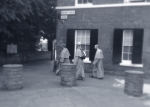
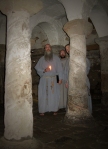
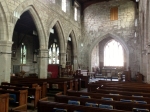
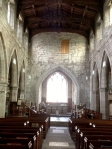

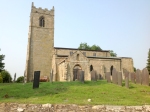

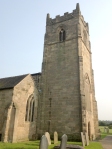
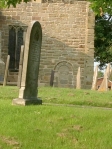
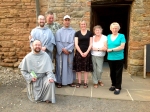
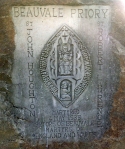


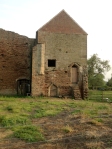



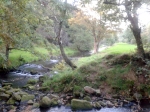


Save the untimely arrival at St Wilfrid’s, and missing a chance to view the interior, it seems you had a wonderful time of it. That must have been mildly dissappointing… I might have considered tunneling into that one! Not even a protestant sandblasting of the Catholic skin within could hide the flesh and bones beauty of an old church. Perhaps someday you’ll stroll by her again when the doors are open. Thanks to you and to Friar Solanus for sharing your pilgrimage with the rest of us… the pictures were nice… and welcome back stateside!
Englands loss is our gain… even if only for a while.